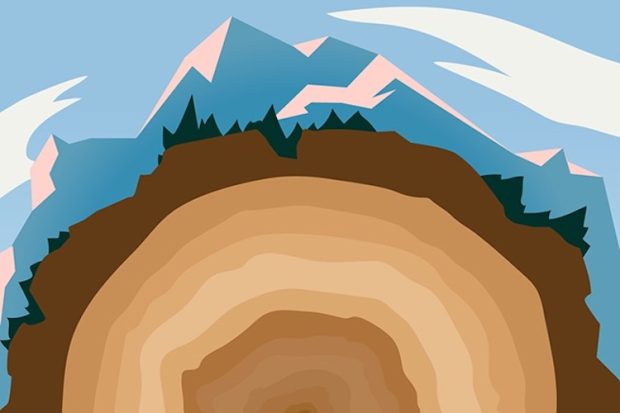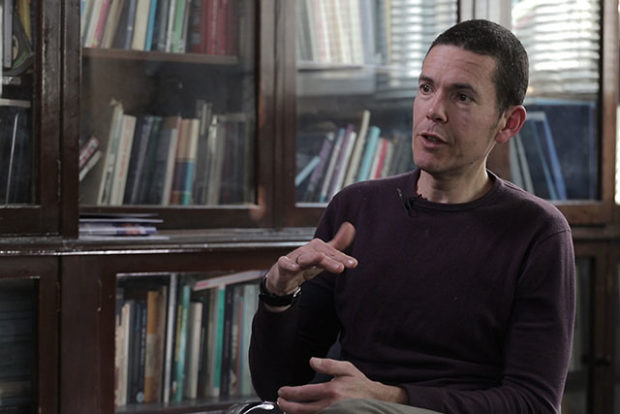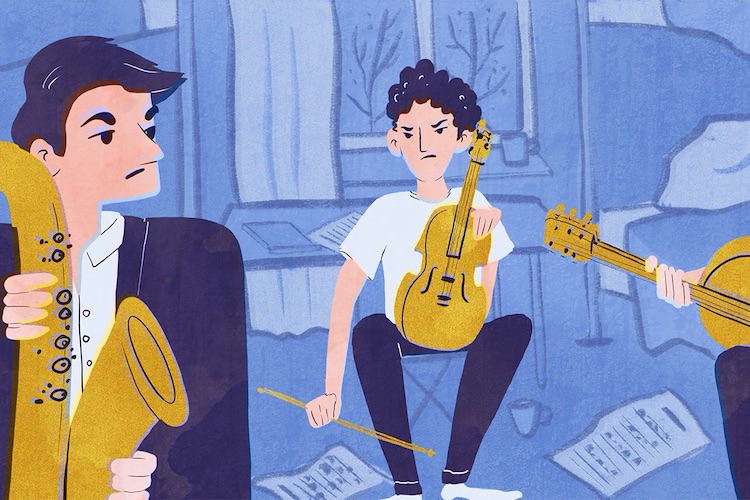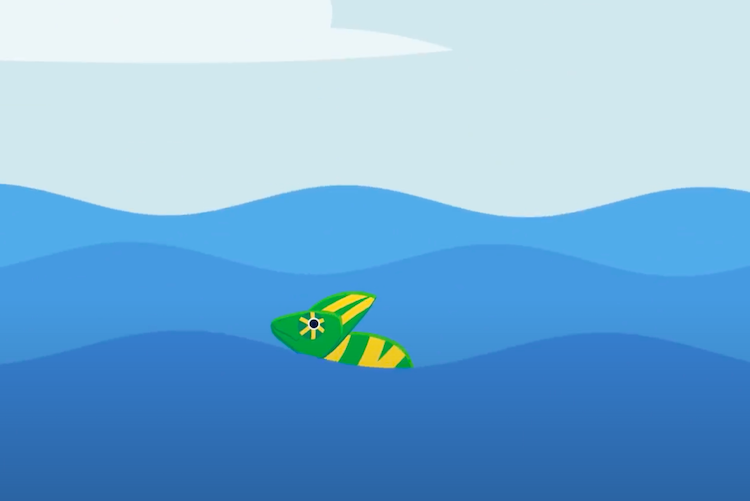Carbon Cycle
Geographer Mathias Disney on carbonate deposits in the ocean, how wildfires release the carbon in the atmosphere and why it’s so hard to model the interactions between the biota and the carbon cycle
videos | May 28, 2020
When we think about the Earth system and the relationship between climate and human beings and the biogeochemical cycles, the life part of the Earth system, Earth system scientists tend to divide this whole very complicated system with all these different feedbacks into two parts. One of them is the physical part of it, the bits that are driven by radiation, energy, mass, and momentum. Those give us very hard constraints on where energy has to be, how we move it around, and where mass has to be. So physics enables us to explain those flows even though they’re very, very complicated, and we have to make many approximations: physical principles enable us to build models of how to understand those processes. Where that gets more complicated is when we think about the biogeochemical cycles, and what I mean by that is the interactions between biology, the biota, the living stuff and the geochemistry, in particular things like the carbon cycle.
Some of the big issues that we have in studying the carbon cycle are where carbon is in a system, where it goes, how it gets there, and how dynamic it is. As I said at the outset, there’s the sort of physical process of moving things around, and it is relatively easy to model in some senses, and when you throw life into that, then it gets much more complicated. If we think about the atmosphere, in the atmosphere, we have gases moving around, so we can model that using the kind of models that climate scientists use for the dynamics of gases and vapours. If we think about the ocean, the ocean is a big liquid body; it has a huge store of energy and also a huge store of carbon. It absorbs carbon through chemical absorption through the surface; some of that carbon is taken up by plant life in the surface parts of the ocean; some of that then falls down to the bottom of the ocean and forms carbonate deposits at the bottom of ocean which then tend to be locked up for geological timescales. So, there’s a huge amount of carbon locked up in mineral deposits at the bottom of the ocean. But the timescales of any possible turnover for that is tens of millions of years, so on human timescales it’s beyond our worrying about.
But of course, as you get up to shorter and shorter time scales, we move to the land surface where we have plants and animals that respire on a daily basis, and their input to the carbon cycle is very, very dynamic. It’s very patchy as well, and that’s another problem: we have deserts, we have forests, we have huge agricultural areas, we have urban areas, so the dynamics of carbon release into the atmosphere and absorption happens on scales of seconds to minutes to hours.
If we think about a forest, for example, forests are taking up carbon all the time for photosynthesis. That doesn’t happen so much during the night, so there’s a day/night cycle. Then there’s a seasonal cycle and then there are the much longer-term changes. So there are all these different cycles of different time periods overlaid on one another.
If we think about agriculture, we take an area of land, and we plant wheat, for example, and then that grows to the season, and then we take it all out again. So, in terms of the carbon cycle, essentially, that piece of land is carbon neutral in as much as we planted stuff, it grew, and then we took it out, we did something with it: we harvested it, we ate it, we fed it to animals and so on. But that’s moving carbon around in this carbon cycle, and when you want to try and understand and model the carbon cycle, that’s a very complex process.
So what’s happened over the last 20 or so years is a combination of understanding that the dynamics of the carbon cycle is really quite complicated when you start to consider the biological aspect. So there are these two directions: the kind of climate-scale models started from modelling the fundamental processes there, so physics of the system, and then we realized that if you don’t get the biology in there somehow, those models will be uncertain, and a large part that uncertainty will be driven by not getting the living part right. At the same time, ecologists and biologists have been looking at how to model those processes on scales from individual cells through to leaves through to forests and then coupling those to climate. Of course, those models operate at very different scales and for different purposes. So one of the challenges that there’s been over the last 20-30 years is how to mesh those two directions of science, how to put some biology and some ecology into climate and how climate can give feedback to the ecology. If you want to predict what’s going to happen to the land surface and the carbon cycle over the next 20, 50 or 100 years, there’s no point in saying, well, we’re just going to move carbon around without thinking about what’s happening to the living part of the feedbacks.

So, modelling those dynamics of fires and understanding how that affects the release of carbon into the atmosphere is, as you can imagine, extraordinarily complicated because even when we do it planned, it’s hard to incorporate that on a global scale. When we do it unplanned, which is what we do most of the time, then incorporating that into some kind of a model that allows you to make predictions is very hard.
So what has changed the way we look at things there over the last 20-30 years is satellite observations, which have allowed us to not necessarily say too much about why fires have started in one area rather than another but have allowed us to look at where fires occur, when they occur, how severe they are, how large they are and to estimate how much carbon is released from savannas, from cropland, from clearance of forest and deforestation in South America and Southeast Asia.
So satellite observations give us this synoptic global overview of fires which have been a real change in the way that the carbon cycle modellers have been able to consider modelling the carbon cycle and the feedbacks to the Earth system.
I focused primarily on the land surface here, but the ocean has a whole other set of challenges associated with it. The ocean is an easier problem in some respects because the dynamics tend to be horizontal, and the ocean is a very large homogeneous area. Other than for things like temperature and so on, yes, there are differences from one place to another, but the ocean is a very big integrating area, whereas the land surface is incredibly heterogeneous; it changes everywhere on all sorts of different scales, whereas the ocean and the atmosphere are what we call a little bit more well-mixed than that, they’re a little bit more homogeneous. So you can apply models to those, where if you assume that you understand what’s going on here, you can predict what’s going on over there. Those sorts of things hold reasonably well, whereas when you look at the land surface, and you have forests next to agriculture and urban areas, managed and unmanaged, with all these different heterogeneous landscapes, those assumptions that what works here will work there don’t hold.
The only way we’ve really been able to address the issue of understanding how that works on a very large scale is by using satellite data. That’s where a lot of the advancement in carbon cycle understanding is coming from, integrating our understanding of ecology with our understanding of climate and then using satellite observations to knit these things together.






























